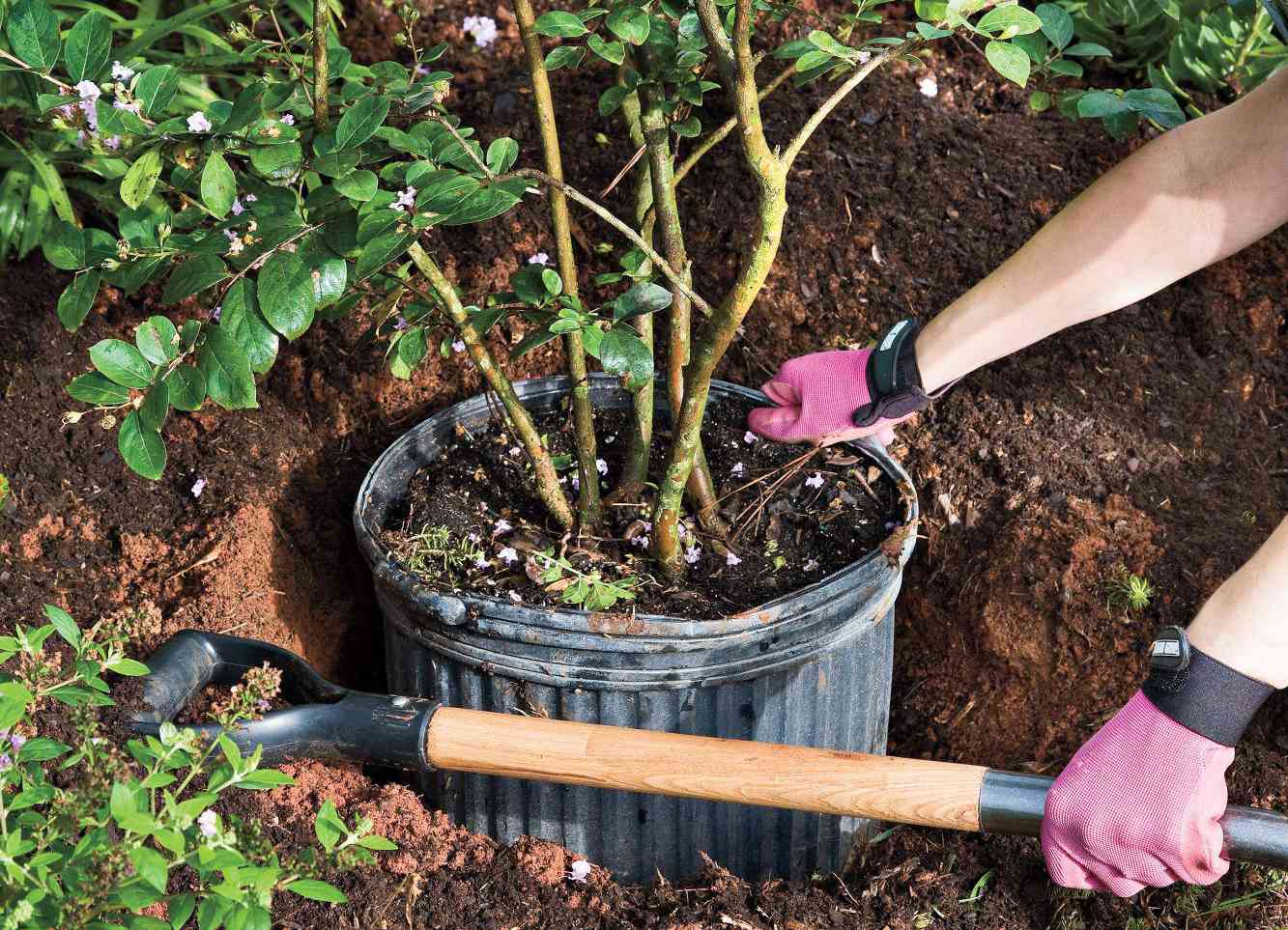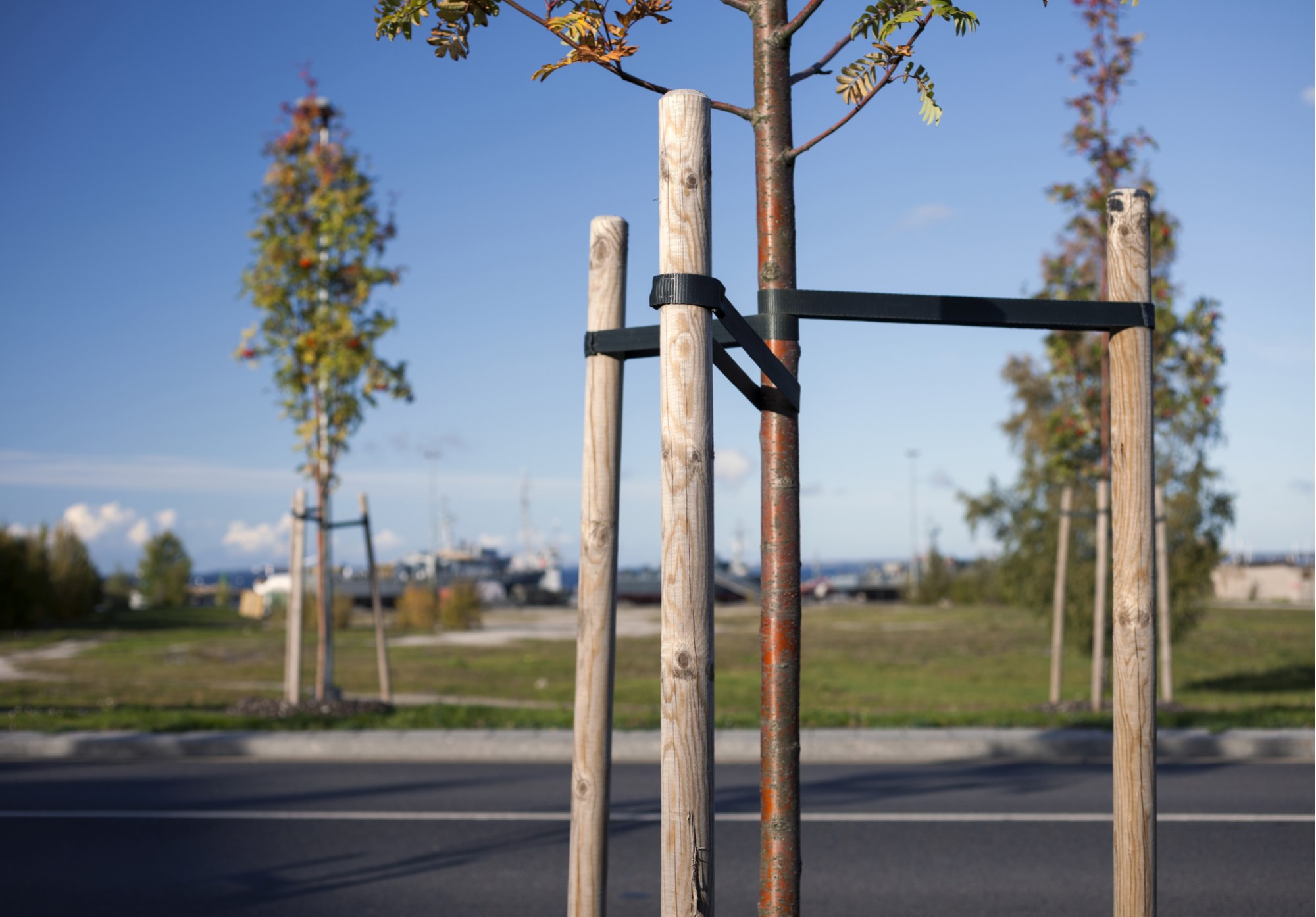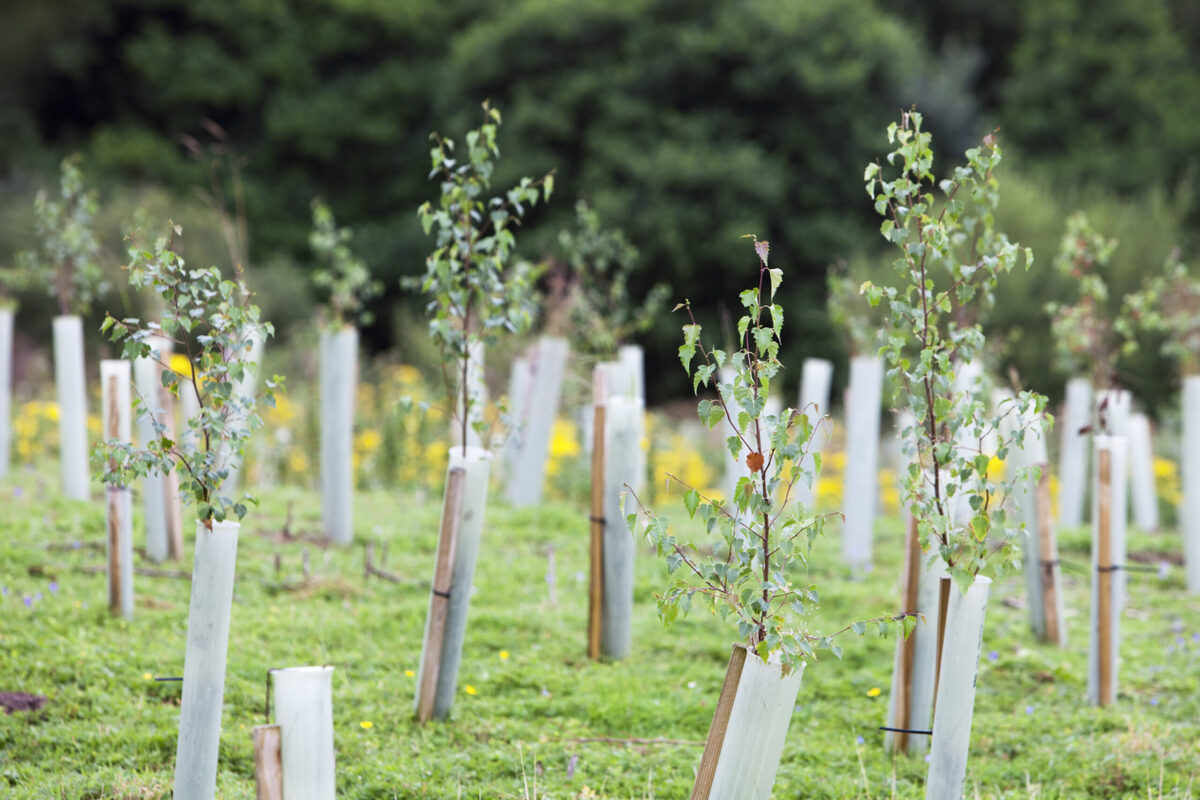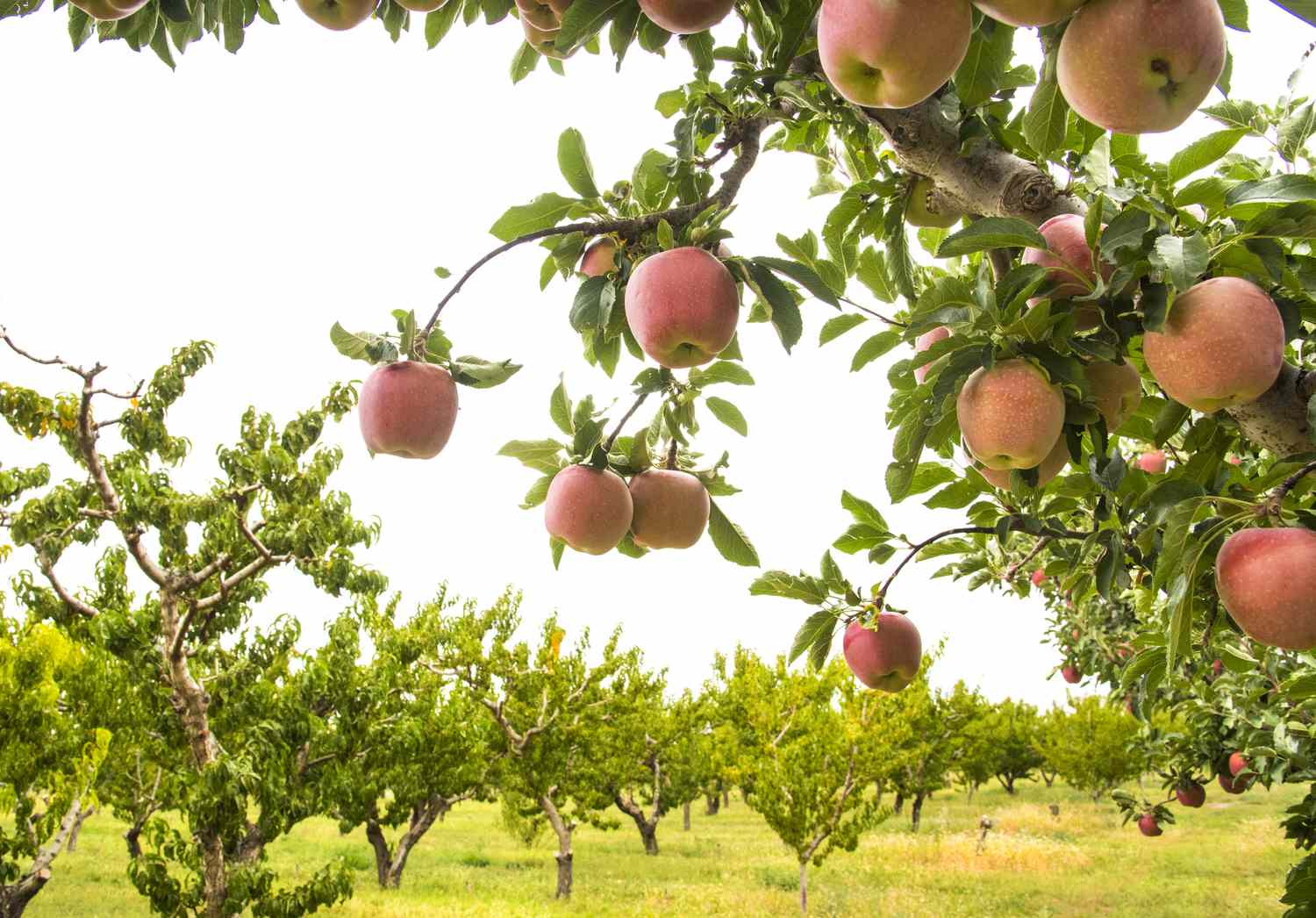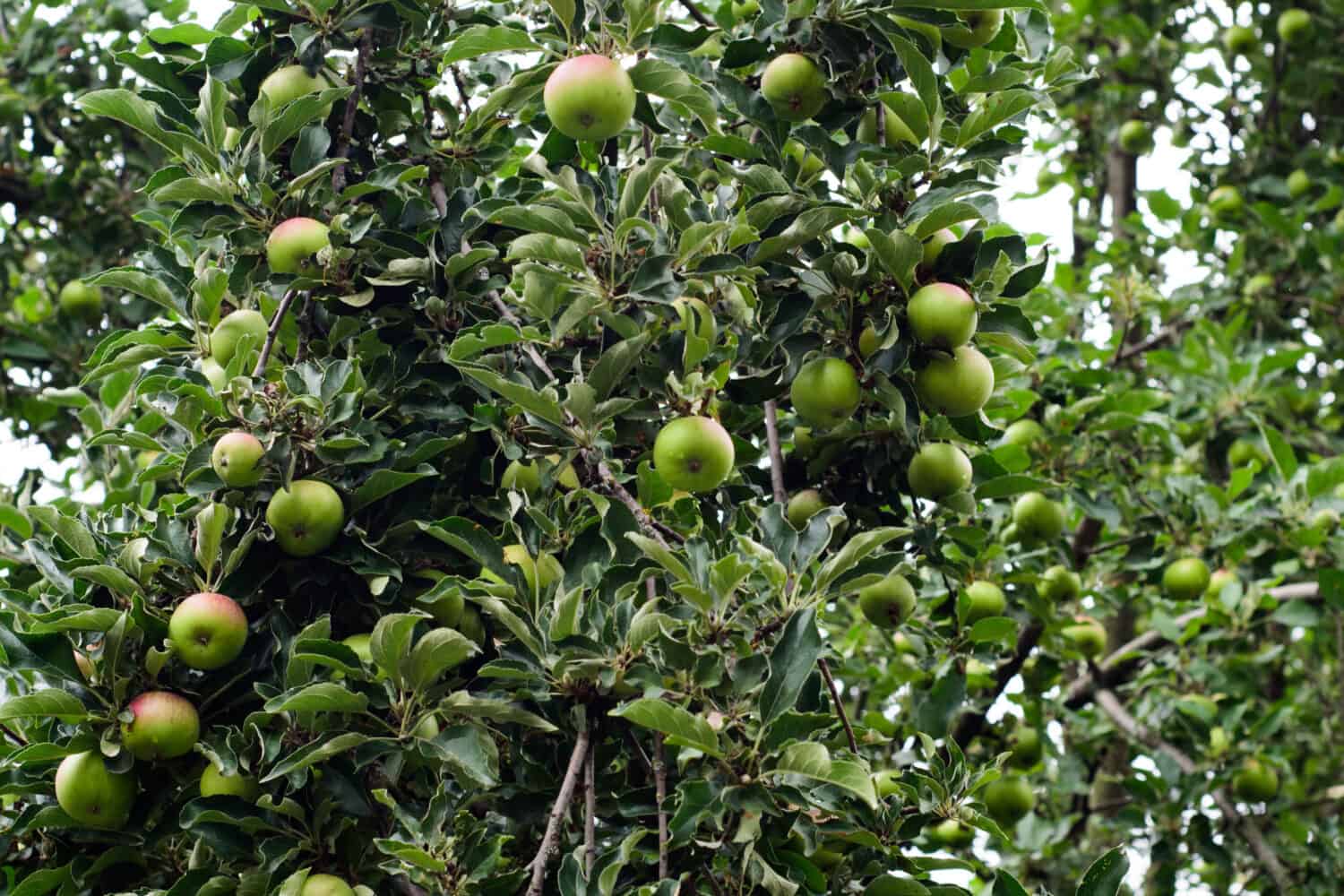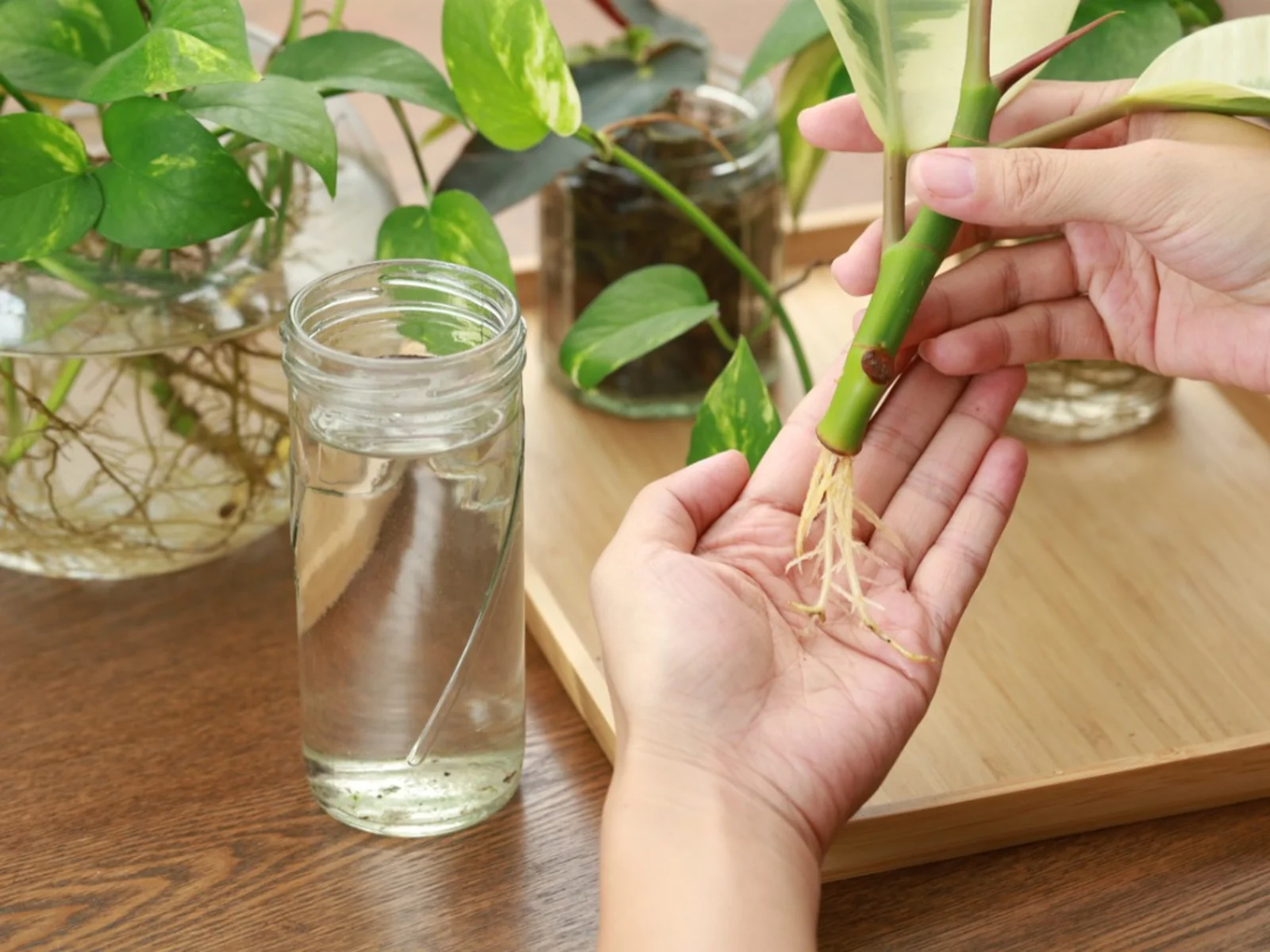Home>Gardening Techniques>Plant Care>When To Plant Bare Root Trees
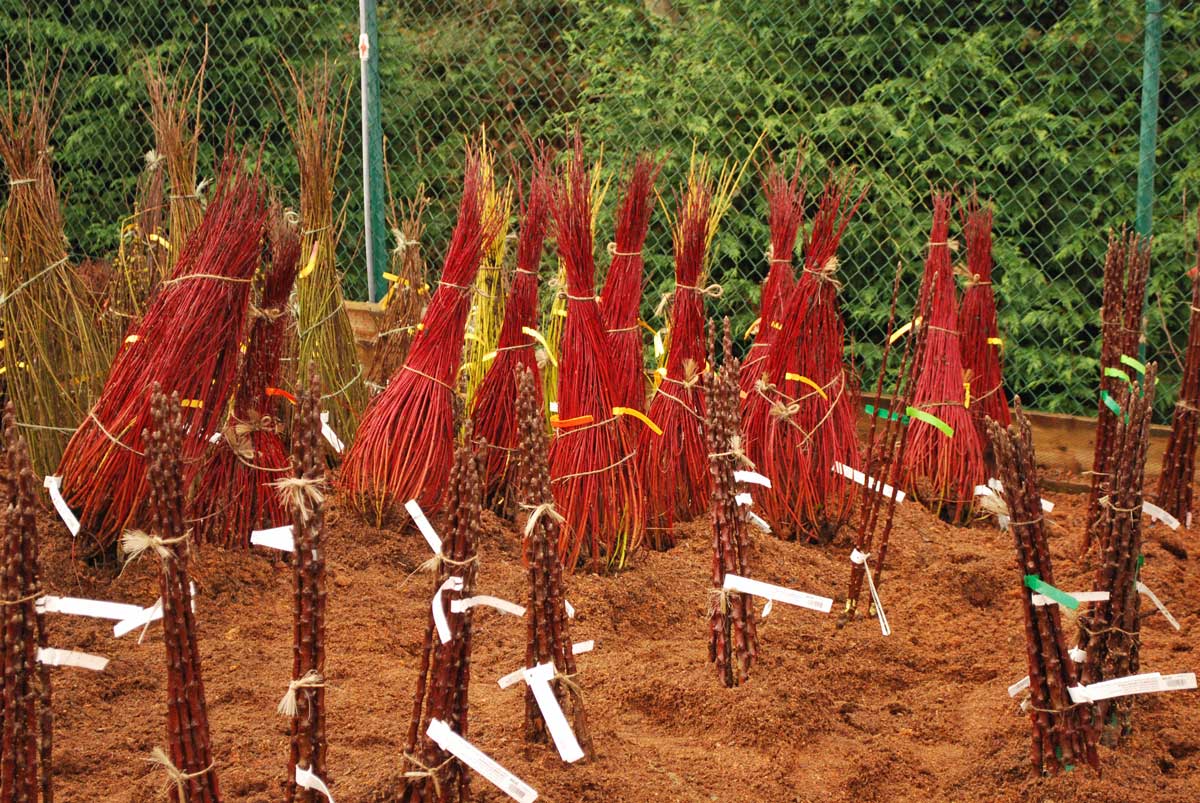

Plant Care
When To Plant Bare Root Trees
Modified: February 10, 2024
Learn the best time to plant bare root trees and how to care for them. Expert tips on planting and maintaining healthy trees.
(Many of the links in this article redirect to a specific reviewed product. Your purchase of these products through affiliate links helps to generate commission for Chicagolandgardening.com, at no extra cost. Learn more)
Table of Contents
Introduction
Welcome to the world of plant care! If you’re an avid gardener or a plant enthusiast, you know how important it is to give your plants the best possible start for healthy growth. One crucial aspect of plant care is knowing when and how to plant bare root trees. Whether you’re a beginner or an experienced gardener, understanding the benefits, considerations, and proper methods of planting bare root trees is essential for their success.
Bare root trees are essentially young trees that have been removed from the soil during their dormant season, and are sold with their roots exposed, without any soil surrounding them. This makes them more lightweight and affordable compared to potted trees. Planting bare root trees is not only cost-effective, but it also provides a better chance for these trees to establish strong root systems.
In this article, we will dive into the various aspects of planting bare root trees. We will explore the benefits of choosing this method, the factors you need to consider before diving in, and the best time to plant bare root trees. Additionally, we will provide step-by-step instructions for planting bare root trees and highlight the importance of proper soil preparation. Finally, we will touch on the care and maintenance needed to ensure the long-term health and vitality of your bare root trees.
So, whether you’re looking to beautify your garden, create a windbreak, or give shade to your backyard, planting bare root trees can be a rewarding and environmentally-friendly endeavor. Let’s get started on this exciting journey of discovering the world of bare root trees and how to care for them!
Benefits of Planting Bare Root Trees
Planting bare root trees offers several advantages that make them a popular choice among gardeners and landscapers. Understanding these benefits can help you make an informed decision when it comes to selecting the best trees for your landscape. Let’s explore the advantages of planting bare root trees.
- Cost-effective: Bare root trees are more affordable compared to potted or container-grown trees. By eliminating the need for bulky and heavy containers, bare root trees save on production, shipping, and storage costs. This makes them an economical choice, especially for planting large quantities of trees or covering a larger area.
- Establishment of strong root systems: Bare root trees have their roots exposed, enabling them to establish strong and healthy root systems more quickly. During the dormant season, trees focus their energy on root growth rather than foliage development. Planting bare root trees allows the roots to spread out and establish in the ground, setting a solid foundation for future growth and stability.
- Wider variety of tree species: Nurseries often offer a wider selection of tree species in bare root form compared to potted trees. This gives you the opportunity to choose from a diverse range of trees that suit your specific landscape needs, climate conditions, and aesthetic preferences. Whether you’re looking for fruit trees, shade trees, or ornamental trees, the options are vast when it comes to bare root trees.
- Easier transportation and planting: Bare root trees are lightweight and easier to handle compared to potted trees. This makes them more convenient to transport and plant, especially if you’re working alone or have limited physical strength. The absence of heavy containers reduces the physical strain and allows for faster planting, ensuring that the trees get into the ground swiftly.
- Improved root-to-soil contact: When planting bare root trees, you have the opportunity to ensure maximum root-to-soil contact. This is crucial for the successful establishment of the tree. With bare roots, you can spread the roots out and position them optimally in the planting hole, allowing for better integration with the surrounding soil. This enhances nutrient uptake, water absorption, and overall tree health.
These benefits make planting bare root trees an attractive option for both professional landscapers and home gardeners. Not only do they provide cost savings, but they also offer the opportunity for quicker establishment, a wider variety of tree species, and easier transportation and planting. Now that we understand why planting bare root trees is advantageous, let’s delve into the essential factors to consider before diving in.
Factors to Consider Before Planting Bare Root Trees
Before you start planting bare root trees, it’s crucial to take certain factors into consideration to ensure the best possible outcome for your trees. By understanding and addressing these factors, you can create an optimal environment for the successful establishment and long-term growth of your bare root trees. Let’s explore the key factors you should consider before planting bare root trees.
- Climate suitability: Different tree species have specific climate requirements for healthy growth. It’s important to select tree varieties that are well-suited to your region’s climate conditions, including temperature, rainfall, and sunlight. Research the hardiness zones for each tree species and choose accordingly to ensure the trees will thrive in your area.
- Soil type and quality: The type and quality of the soil play a critical role in the success of your bare root trees. Conduct a soil test to determine its composition, pH level, and nutrient content. Most trees prefer well-draining soil with a pH level within a specific range. If necessary, amend the soil by adding organic matter or adjusting the pH to create an ideal growing environment for your trees.
- Site selection: The location where you plant your bare root trees is vital for their growth and development. Consider factors like sunlight exposure, wind patterns, and available space. Choose a site that provides the appropriate amount of sunlight for the specific tree species. Take note of any potential obstructions, such as buildings or other trees, that may block sunlight or create excessive shade.
- Spacing and planting distance: To ensure proper growth and avoid overcrowding, it’s important to determine the appropriate spacing and planting distance between your bare root trees. This will vary depending on the specific tree species and their projected mature size. Be sure to research and follow the recommended spacing guidelines provided by experts or nurseries.
- Water availability: Adequate water supply is essential for the survival and establishment of bare root trees. Consider the availability of water in your chosen planting location. Evaluate the natural rainfall patterns in your area and assess the need for irrigation systems, especially during dry periods. Proper watering practices are critical during the initial post-planting period, as well as throughout the tree’s lifespan.
By carefully considering these factors, you can set your bare root trees up for success. The climate suitability, soil type and quality, site selection, proper spacing, and water availability are all crucial aspects to evaluate before planting. Once you’ve taken these factors into account, you’ll be ready to move on to the next step: determining the best time to plant your bare root trees. Let’s explore this important aspect in the next section.
Best Time to Plant Bare Root Trees
Choosing the right time to plant your bare root trees is vital for their successful establishment and growth. Timing is crucial because it ensures that the trees have optimal conditions to develop strong root systems before facing challenging weather conditions or seasonal changes. Let’s explore the best time to plant bare root trees based on various factors.
In general, the ideal time to plant bare root trees is during their dormant season. This period typically occurs in late fall, winter, or early spring, depending on your specific climate. Planting during dormancy allows the trees to focus their energy on root development, as foliage growth is minimal during this time. Here are some factors to consider when determining the best time to plant bare root trees:
- Climate and weather conditions: Consider the climate in your region and assess the weather patterns during the dormant season. Planting when the soil is workable and not frozen is crucial for the trees’ root development. Avoid planting during extreme hot or cold periods or when heavy rainfall is expected, as these conditions can hinder the trees’ establishment.
- Availability and shipping: Bare root trees are typically available for purchase during specific times of the year. Contact local nurseries or online suppliers to inquire about their availability and shipping schedules. Plan your planting time accordingly based on when the bare root trees will be ready for delivery or pickup.
- Soil temperature: Soil temperature plays a significant role in root growth and development. Ideally, the soil temperature should be above freezing but not too warm during planting. This allows the tree’s roots to adjust to their new environment without the stress of extreme temperatures. Consult local gardening resources or extension services to determine the recommended soil temperature for planting in your area.
- Tree species-specific requirements: Different tree species may have specific planting time preferences. Some trees, like fruit trees, may require a specific amount of chilling hours during winter to properly set fruit. Consult reliable sources, such as nurseries or gardening experts, for information on the specific preferred planting times for the tree species you intend to plant.
By considering these factors, you can determine the best time to plant your bare root trees in alignment with your climate, soil conditions, and the specific requirements of the chosen tree species. Remember that the goal is to provide the trees with the optimal conditions for successful establishment and healthy growth.
Now that you have a better understanding of when to plant bare root trees, let’s move on to the next section, where we will explore the step-by-step process of planting bare root trees to ensure their proper installation and future prosperity.
Steps to Plant Bare Root Trees
Planting bare root trees may seem like a daunting task, but with proper preparation and care, it can be a straightforward and rewarding process. Follow these step-by-step instructions to ensure the successful installation of your bare root trees.
- Prepare the planting site: Choose a location that meets the requirements of your tree species in terms of sunlight, soil type, and spacing. Clear the area of any weeds, rocks, or debris that may hinder root growth. Dig a hole wide and deep enough to accommodate the root system, ensuring it is not too deep or shallow.
- Inspect the roots: Before planting, carefully inspect the bare root tree’s roots. Look for any damaged, broken, or diseased roots, and trim them with clean pruning shears. Soak the roots in water for a few hours prior to planting to rehydrate them and promote healthy growth.
- Position the tree in the hole: Place the bare root tree in the center of the hole, ensuring that the top of the root crown sits slightly above ground level. Spread out the roots in a natural and outward fashion, avoiding any crossing or tangling of roots. This helps facilitate better root-to-soil contact and encourages proper growth.
- Backfill the hole: While holding the tree upright, backfill the hole with the original soil or a mixture of soil amendments and native soil. Gently tamp the soil to remove any air pockets around the roots, taking care not to compact the soil too firmly. Gradually add soil and firm it until the hole is filled.
- Water thoroughly: After planting, water the bare root tree thoroughly. This helps settle the soil around the roots and provides necessary moisture for initial establishment. Ensure that the entire root zone is adequately watered. Apply a layer of mulch around the base of the tree to conserve moisture, suppress weeds, and regulate soil temperature.
- Stake if necessary: Depending on the size and stability of the tree, you may need to provide additional support by staking it. Insert one or two stakes into the ground, avoiding any direct contact with the roots. Use tree ties or soft material to secure the tree to the stakes, allowing for some flexibility in movement.
- Monitor and maintain: Regularly monitor the newly planted bare root tree for any signs of stress, such as wilting or yellowing leaves. Water the tree deeply and regularly during its first year, especially during dry periods. Prune and shape the tree as needed. Implement a proper maintenance routine, including fertilization and pest control, to promote healthy growth and longevity.
Following these steps will help ensure a successful and healthy start for your bare root trees. Remember to provide proper care and attention to the trees in the initial stages and throughout their lifespan to maximize their growth potential. With time, you will witness the beauty and benefits of your newly planted bare root trees as they flourish and become an integral part of your landscape.
Soil Preparation for Bare Root Trees
Proper soil preparation plays a crucial role in the successful establishment and growth of bare root trees. Creating a favorable environment with nutrient-rich and well-draining soil sets the stage for healthy root development and overall tree vitality. Follow these steps to prepare the soil before planting your bare root trees.
- Conduct a soil test: Start by conducting a soil test to assess the current condition of your soil. A soil test will provide valuable information about the pH level, nutrient content, and organic matter in the soil. This allows you to make informed decisions regarding soil amendments and adjustments.
- Improve soil drainage: Bare root trees thrive in well-draining soil. If your soil tends to be heavy or compacted, you’ll need to improve drainage. Incorporate organic matter, such as compost or aged manure, into the soil to enhance its structure and increase its ability to drain excess water.
- Adjust soil pH: Bare root trees have varying soil pH preferences depending on the species. Determine the preferred pH range for the specific trees you are planting and adjust the soil pH accordingly. Adding amendments like lime or sulfur can help raise or lower the pH level, respectively.
- Amend the soil: Based on the results of the soil test, add appropriate amendments to improve soil quality. This may include adding organic matter, such as compost or leaf mold, to increase fertility and improve moisture retention. Incorporate the amendments into the soil to a depth of around 12 inches, ensuring even distribution.
- Remove weeds and debris: Clear the planting area of any weeds, grass, or debris that may compete with the bare root trees for nutrients and water. Weeds can also serve as hosts for pests and diseases. Ensure a clean and weed-free planting site to give your bare root trees the best possible start.
- Consider nutrients: Depending on the results of the soil test, you may need to add specific nutrients to the soil. Some common nutrient deficiencies include nitrogen, phosphorus, and potassium. Use slow-release fertilizers or organic amendments to provide essential nutrients for the trees’ initial growth and long-term health.
- Avoid excessive soil compaction: While amending the soil, be cautious not to over-till or excessively compact the soil. Excessive compaction can restrict root growth and hinder the tree’s ability to establish in the ground. Work the soil gently and avoid heavy machinery or tools in the planting area.
By following these steps to prepare the soil, you create an ideal environment for the successful establishment and growth of your bare root trees. Well-draining soil with a balanced pH and nutrient content promotes strong root development and allows the trees to access the necessary resources for healthy growth.
Remember that maintaining good soil health is an ongoing process. Regularly monitor soil moisture, nutrient levels, and overall tree health. Adjust fertilization and watering practices as needed to ensure the continuous well-being of your bare root trees. With healthy and nourished soil, your trees will thrive and bring beauty to your landscape for years to come.
Care and Maintenance of Bare Root Trees
Providing proper care and maintenance is essential for the long-term health and vitality of your bare root trees. By implementing regular practices and monitoring their growth, you can ensure that your trees thrive and continue to beautify your landscape. Let’s explore some important aspects of caring for and maintaining bare root trees.
- Watering: Adequate and consistent watering is crucial, especially during the first year after planting. Monitor soil moisture and ensure that the trees receive enough water to keep the root zone consistently moist but not waterlogged. Deep, infrequent watering is generally more effective than light, frequent watering.
- Mulching: Apply a layer of organic mulch around the base of the tree, keeping it a few inches away from the trunk to avoid moisture buildup. Mulch helps conserve soil moisture, regulate soil temperature, and suppress weed growth. Use materials like wood chips, shredded bark, or compost, and replenish the mulch layer as needed.
- Pruning: Regular pruning helps shape and maintain the structure of your bare root trees. Prune any damaged, diseased, or crossing branches to promote good airflow and reduce the risk of disease. Pruning during the dormant season is generally recommended, as the trees are less prone to stress.
- Fertilization: Assess the nutrient needs of your bare root trees based on soil tests and visual indicators. Apply slow-release fertilizer or organic amendments during the growing season to provide essential nutrients. Avoid over-fertilization, as excessive nutrient levels can cause harm to the trees and the environment.
- Pest and disease management: Regularly inspect your trees for signs of pests or diseases. Monitor for symptoms such as discolored leaves, abnormal growth, or visible pests. Implement integrated pest management practices, which may include cultural methods, biological controls, or judicious use of pesticides when necessary.
- Protection from extreme weather: Protect your bare root trees from extreme weather conditions, such as frost, high winds, or excessive heat. Provide shade, windbreaks, or temporary coverings as needed to prevent stress or damage to the trees. Keep an eye on weather forecasts and take proactive measures to mitigate potential risks.
- Ongoing monitoring and evaluation: Regularly monitor the growth and health of your bare root trees. Keep an eye out for changes in foliage color, leaf drop, or signs of stress. Adjust your care practices as needed based on the specific requirements of the tree species and the unique conditions of your landscape.
Caring for bare root trees requires consistent attention and a proactive approach. By providing proper watering, mulching, pruning, fertilization, and pest management, you can promote the overall health and resilience of your trees. Ongoing monitoring and evaluation will help you identify and address any issues before they escalate.
Remember that each tree species has its own unique care requirements. Consult reliable sources, such as gardening experts or extension services, for specific guidelines related to the trees you are planting. With proper care and maintenance, your bare root trees will flourish and enhance the beauty of your landscape for many years to come.
Conclusion
Planting and caring for bare root trees is a rewarding and fulfilling endeavor for any gardener or landscaping enthusiast. By understanding the benefits of bare root trees, considering essential factors before planting, and following proper procedures, you can ensure the successful establishment and long-term health of your trees.
Bare root trees offer numerous advantages, including cost-effectiveness, the establishment of strong root systems, a wider variety of tree species, easier transportation and planting, and improved root-to-soil contact. These benefits make them a popular choice among gardeners looking to beautify their landscapes while saving time and money.
Before planting bare root trees, it is important to consider factors such as climate suitability, soil type and quality, site selection, spacing, and water availability. By addressing these aspects, you can create an optimal environment for your trees to thrive.
Timing is crucial when planting bare root trees, with the dormant season being the ideal time for establishment. By planting during this period, you give your trees the best chance to develop strong root systems before facing challenging weather or seasonal changes.
Following the step-by-step process of planting bare root trees ensures proper installation and future success. From preparing the planting site to watering, mulching, and pruning, each step contributes to the healthy growth and vitality of your trees.
Proper soil preparation is paramount for the success of bare root trees. Conducting a soil test, improving drainage, adjusting the pH level, and adding necessary amendments create an ideal growing environment for your trees to thrive.
Once planted, caring for bare root trees requires attentive maintenance. This includes proper watering, mulching, pruning, fertilization, and proactive pest and disease management. Ongoing monitoring and evaluation help identify and address any issues that may arise.
In conclusion, planting and caring for bare root trees is a journey that requires knowledge, care, and dedication. By providing optimal conditions and proactive care, your bare root trees will flourish and become a beautiful addition to your landscape. So, roll up your sleeves, get your hands in the soil, and let your love for plants and nature guide you as you embark on this exciting plant care adventure!

